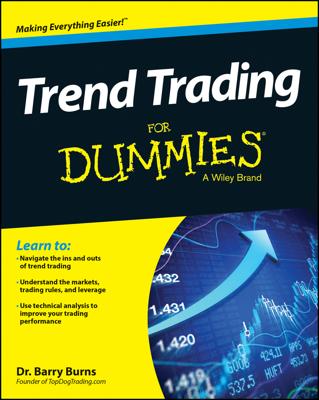Market indicators are designed to give buy and sell signals, although in many instances, the signal is more like a warning and doesn’t have a black-and-white embedded decision rule. Indicators generate signals in three ways — crossovers, meeting a range limit, and convergence and divergence.
Crossovers
The term crossover refers to one line crossing another line. Crossovers in technical analysis and trading include
The price crossing a fixed historic benchmark
The indicator crossing the price or the price crossing the indicator
One line of a two-line indicator crossing the other
In most instances — but not all — the price crossing an indicator is named a breakout, one of the most important concepts in technical analysis. When a price rises above a long-standing resistance line, for example, technical traders say it “broke out” of its previous trading range, and now the sky’s the limit — until the new range is established. Usually, you want to scrupulously observe and measure a breakout. A breakout doesn’t necessarily imply a trend reversal, though; sometimes a breakout is a confirming factor that the existing trend is gathering new momentum or passing new benchmarks.
Range limits
Oscillators describe where today’s price stands relative to its recent trading range. Oscillators are usually based on 100, so they range from zero to 100, or minus 100 to plus 100, or some other variation using the number 100.
In practice, traders find that usually the scope of the price range falls well under the outer limits and doesn’t vary by more than 20 percent to 80 percent of the total possible range, so they draw a line at 20 percent of the maximum range and another at 80 percent (or 10 percent and 90 percent, or some other variation).
When the indicator approaches one of the lines, the price is nearing an extreme of its recent range. This is a warning of an overbought or oversold condition and thus a potential retracement or reversal.
Depending on whether you’re a trend-follower or a swing trader, you may alter the amount of your position or alter your stop. If you’re a swing trader, you may use an actual crossover of the range lines as a buy/sell signal.
Convergence and divergence
Convergence and divergence define how indicator lines relate to each other:
Convergence: Two indicator lines coming closer to one another, such as when a support line and a resistance line converge to form a triangle or two moving averages get closer together, indicating less difference between their numerical values. Convergence is most often seen in indicators on the price chart, and generally means that the price action is
Starting to go sideways
Has a narrower high-low range
Both
A sideways move, in turn, generally leads to a breakout. Convergence does not have an embedded trading rule and is more often used as a warning that a change in direction or the strength of a trend is changing.
Divergence: Two indicator lines moving farther apart, such as when the spread between two moving averages widens. Divergence also refers to an indicator and the price going in different directions, and this is the most common and useful application of the observation.
Momentum indicators, in particular, reshuffle the components of the price bar to come up with a price’s rate of change, so that the slope of the indicator is a sophisticated measure of the strength of a trend. When the price is still rising (making new highs) as the momentum indicator starts to fall (making progressively lower highs), the price and indicator are diverging.

